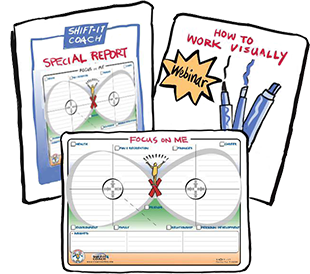Audio Version: Click Player to Stream or Right Click on Link to Download. For full Audio Library of Past Messages, Click Here
For the sake of this article I’m going to out myself age-wise … I’m a Gen Xer born in 1968, so that makes me 48. My generation is the last straddle generation where modern technology is concerned. We are the last generation who has personal memory of what life was like before computer technology arrived on the scene. And it’s within our lifetime that humanity is navigating the amazing yet treacherous terrain of integrating synthetic tools with our organic natures.
The Early Influences of Computer Tech for Process Professionals:
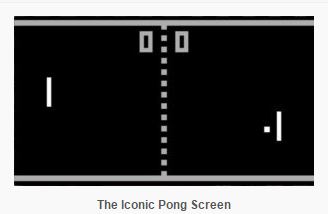 As a Gen Xer, I played Pong as a kid, the first video game. My first job out of school was for the provincial government here using Wang Dos computers (remember them?!).
As a Gen Xer, I played Pong as a kid, the first video game. My first job out of school was for the provincial government here using Wang Dos computers (remember them?!).
As an early entrant into the Graphic Recording and Graphic Facilitation field in San Francisco in the 1990s, I had to rely on humongous room-size photo stat cameras before digital cameras came along. Now my phone and an app cover the majority of my repro needs.
Desktop publishing, digital cameras, scanners, large document sharing, email bandwidth, pdfs, cell phones and eventually web conferencing and digital tablets have facilitated big changes in my process career and ability to interact with my clients … as they probably have yours too.
Where Tech is Headed … Quickly:
As a Process Professional, my practice has been transformed by technology. I used to travel so much that there were times that I was home only 5-6 days out of the month. I basically lived out of a suitcase. And I looked at my mentors and thought, “no, this is not what I want for myself”. So I had to figure out a different way of doing things and thankfully I had timing on my side as a tech advancement happened just as I was coming up as a process lead.

At the Tablet with JJ
Nowadays, my commute is more often than not down my hallway, where I work by web conference with my drawing tablet and my dog on my lap. And rural bandwidth is good enough now that I can do it from the middle of the British Columbian woods!
I still work in-person in my training, facilitation, coaching and energy work practice. But the percentage of my in-person work is now less than my online work. I work with English speakers from across the globe on my various subject specialties. Technology allows us to bypass travel if we don’t have the time, energy or budget for it.
Right now the tech I’m using is pretty basic: web conferencing (Webex or Zoom) and I screen share my drawing tablet (22HD Wacom Cintiq) with my clients, who I can also see via videocam and hear via speakers.
I create spontaneous visual notes from a blank page in Sketchbook Pro and/or select pre-prepared templates from my SHIFT-IT Visual Coaching System® which I write and draw upon. In tech jargon, what I’m doing is still very flat or“2D”.
Virtual Reality Is Almost Upon Us:
In speaking with other GR/GF colleagues who are also interested in where tech is going, its looking like the details are still up for grabs but overall we are moving from the 2D into the 3D. And fast!
 It took a decade for tech to fulfill my early visions of working virtually with my coaching clients. Those in the know say it’ll be 3 years or sooner when Virtual Reality (VR) environments and tools (smart glasses, 3D drawing, and holographic simulations) will be really doable for use in training and process oriented settings.
It took a decade for tech to fulfill my early visions of working virtually with my coaching clients. Those in the know say it’ll be 3 years or sooner when Virtual Reality (VR) environments and tools (smart glasses, 3D drawing, and holographic simulations) will be really doable for use in training and process oriented settings.
Just how doable and for whom is up for debate. There will be a cascade starting with the more elite areas (the coasts and high tech/finance areas) and working out from there. Same urban/industrialized into rural/developing cascade we’ve seen in the spread of interactive-visual methods across the globe is my guess.
How Tech Will Impact the Various Visual Practitioner Roles:
There is a great debate, and some have even gone as far to call it a war, currently going on between artists/illustrators and process types (consultants, facilitators, coaches, etc.) in the emerging Visual Practitioner field.
 A lot of this is just ignorance and even sibling rivalry. Some practitioners and clients don’t understand the full range of things that are being done in the field, and think it’s just one thing or are using terms erroneously. When in actuality a range of roles and methods are happening (see my 4 Genres of Working Visually video/article).
A lot of this is just ignorance and even sibling rivalry. Some practitioners and clients don’t understand the full range of things that are being done in the field, and think it’s just one thing or are using terms erroneously. When in actuality a range of roles and methods are happening (see my 4 Genres of Working Visually video/article).
There is plenty of room for everyone, there is no need to be mean or obnoxious. The pot shots I get from those who don’t understand what I do and teach or feel threatened by it are tiresome. Every Visual Practitioner falls somewhere on the push-pull interactivity spectrum and there is a market for all of it in some way or other, at least currently. However, I think technology is going to change our field in many ways, and perhaps much sooner than many in the field realize. There are bigger fish to fry than each other!
The Impact of Effective Voice Recognition:
I do think that Graphic Recorders who do a lot of functional content recording (rather than the performance art type of recording) should take special note of the new technology that is coming up. As it could drastically impact the content recording that you do when you pair up with process leads. I spent a decade doing this kind of work earlier in my career mostly in strategic planning venues.
 It’s going to take a while, and there will be exceptions, but eventually the majority of real-time capture of more functional content is going to be able to be done by devices especially when the bugs get worked out of voice recognition. Both in in-person environments and in Virtual Reality environments. Perhaps even some of the shapes, basic imagery and icons that we all use in our work, will go the tech route as well. We’ll be selecting them rather than drawing them.
It’s going to take a while, and there will be exceptions, but eventually the majority of real-time capture of more functional content is going to be able to be done by devices especially when the bugs get worked out of voice recognition. Both in in-person environments and in Virtual Reality environments. Perhaps even some of the shapes, basic imagery and icons that we all use in our work, will go the tech route as well. We’ll be selecting them rather than drawing them.
As a facilitator, coach and energy worker I’m looking forward to some extent to using voice recognition tech to gather basic content easily. It’ll free me up to hold a better container and to massage connections, insights and ahhas out of the content collected. And help my groups and individuals make greater meaning out of their thoughts and feelings.
After 2 decades, it’ll be nice for my writing/drawing hand to not have to work quite so hard on gathering the basic stuff. But I don’t think I will ever fully move out of the hand drawn work completely. Will just be more selective in where I choose to use it.
The Continued Bifurcation in Values:
Spontaneous hand written content and hand drawn imagery are a precious, humane thing. Some groups and individuals will most likely continue to seek out these services, even when alternative tech options become workable.
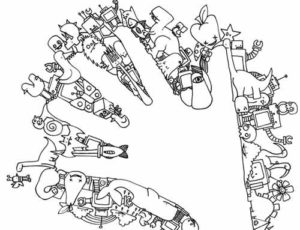 There will most likely be a further bifurcation of people who use and value hand-drawn methods and those who don’t. Different kinds of people with different kinds of values, perspectives and world views who prefer organic to synthetic or visa versa.
There will most likely be a further bifurcation of people who use and value hand-drawn methods and those who don’t. Different kinds of people with different kinds of values, perspectives and world views who prefer organic to synthetic or visa versa.
An analogy is horses … we still have horses long after mechanical vehicles took over the bulk of what they were being used for. However, their numbers have reduced and are centered in niche areas for enthusiasts and connoisseurs and for novelty events and experiences. I hate to say it, because I love the hand drawn work and it’s occupied a lot of my life, but I think the same thing will eventually happen with it. It will still exist but in a different even more niche way than currently. How soon is hard to say, but it is not science fiction … this will happen relatively soon.
Consider Repositioning Yourself and Increasing Your Value:
For those who are currently Graphic Recorders, you might want to start thinking about expanding your role and moving more into the info architecture side of the work (studio work), artistic performance type of recording (if you have the chops to compete with the illustrators who have moved in).
 Or, the process side of things, if that is of interest to you. Expanding your education and skill in order to lead different kinds of processes that groups and individuals need (types of facilitation, organizational development, change management, coaching, counseling, therapy, personal growth, etc.).
Or, the process side of things, if that is of interest to you. Expanding your education and skill in order to lead different kinds of processes that groups and individuals need (types of facilitation, organizational development, change management, coaching, counseling, therapy, personal growth, etc.).
As its going to be much more difficult for technology to take over that kind of work, so human intelligence will most likely continue to do those kinds of roles for now.
Going Deep and More Emotional:
Even though I use technology in some of my current work (and will most likely use the coming technology to some extent too) the nature of what I am doing with technology is changing. More and more I’m coupling technology with deep process work of an emotional or energetic nature. My SHIFT-IT Coaching and my Energy Work services are good examples. As is the more personal mentoring I do within my classes. This kind of work is deeper into the human terrain, where a skilled and empathetic human being is required. A machine will never be able to do it. Or, if it does, its not the kind of world I want to be living in.
 This change has to do with my kundalini awakening (the higher frequencies are changing me). Its moving me more and more into what I’m here to do with my life’s mission. Be a shift agent during these changing times and empower others to be their authentic selves too.
This change has to do with my kundalini awakening (the higher frequencies are changing me). Its moving me more and more into what I’m here to do with my life’s mission. Be a shift agent during these changing times and empower others to be their authentic selves too.
A counter for some of the nastier dangers that favoring our left-brain (masculine, logical and rational) over our right-brain (feminine, emotional and creative) places us.
We are whole beings that are a wonderful balance of both … and we need technological aids that serve our full beings, not lock us into pale artificial versions of who we truly are.
The Pivotal Crossroads The Human Race Stands On:
I can’t talk about technological change without also warning about the dangers of it being a honey trap that could go too far. And of the frightening mindset of Singularity advocates whom see the technology that I’ve written about here as a transitional step towards mimicking and then leap frogging human intelligence through artificial means.
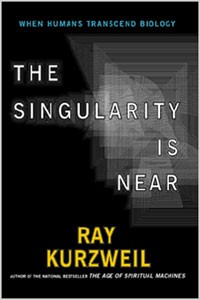 Ray Kurzweil is at Google working away on ‘new projects involving machine learning and language processing’ (the exact stuff and more that is impacting our field). He’s also an agnostic regarding the existence of soul. On the possibility of divine intelligence, he is quoted as saying “Does God exist? I would say, not yet”. An attitude that could very well mean the end of the human race if we aren’t extremely careful.
Ray Kurzweil is at Google working away on ‘new projects involving machine learning and language processing’ (the exact stuff and more that is impacting our field). He’s also an agnostic regarding the existence of soul. On the possibility of divine intelligence, he is quoted as saying “Does God exist? I would say, not yet”. An attitude that could very well mean the end of the human race if we aren’t extremely careful.
DARPA funds most if not all of the virtual reality, artificial intelligence and holographic tech touched upon in this article (see previous article on The Pentagon’s Brain). Some researchers suggest that the technology that trickles down to you and I in the general public is decades behind what really already exists in the classified world. So there is most likely a strategic plan at work in terms of the roll out on this stuff to the general public.
The Power of Heart and Soul:
I take solace knowing these folks who are in control of the tech advances are coming from a left-brain bias that discounts and even downright negates the existence and value of our right brains and spirit. It’s what makes their perspective dangerous but is also hopefully an important oversight. They don’t recognize the wild card that the heart and soul are. That an awakening is happening in the human race, some of whom are positioned right smack in the power places.
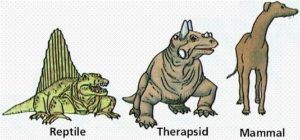 Hopefully the nurturing mammalian aspects of our being will show up in great enough numbers to trump the lower reptilian agendas.
Hopefully the nurturing mammalian aspects of our being will show up in great enough numbers to trump the lower reptilian agendas.
It’s certainly an interesting battle to witness and be a part of. Each of us has a vote through what we do and be.
Please join me in taking action (and praying!) that humanity successfully navigates this next development stage! And may you successfully navigate your own steps in these changing times. Living during this whopper of a transition isn’t necessarily easy but for many of us it’s exactly why we’ve come. May the force be with you!
P.S. For those of you who are Gaia TV subscribers, Regina Meredith and William Henry do a good job of succinctly covering these topics in “Technological Vs Spiritual Transhumanism”.

